We could not find any results for:
Make sure your spelling is correct or try broadening your search.

IonQ Inc is a leader in quantum computing, with a track record of innovation and deployment. IonQ's next-generation quantum computer is the most powerful trapped-ion quantum computer. It is the only company with its quantum systems available through the cloud on Amazon Braket, Microsoft Azure, and G... IonQ Inc is a leader in quantum computing, with a track record of innovation and deployment. IonQ's next-generation quantum computer is the most powerful trapped-ion quantum computer. It is the only company with its quantum systems available through the cloud on Amazon Braket, Microsoft Azure, and Google Cloud, as well as through direct API access. Show more
| Period | Change | Change % | Open | High | Low | Avg. Daily Vol | VWAP | |
|---|---|---|---|---|---|---|---|---|
| 1 | -7.35 | -26.25 | 28 | 28.99 | 20.4795 | 22381415 | 23.74286295 | CS |
| 4 | -22.01 | -51.5939990624 | 42.66 | 44.34 | 20.4795 | 16327315 | 31.22928548 | CS |
| 12 | -9.415 | -31.3154831199 | 30.065 | 54.74 | 20.4795 | 26069472 | 37.08418362 | CS |
| 26 | 13.595 | 192.700212615 | 7.055 | 54.74 | 6.54 | 22729115 | 29.66180141 | CS |
| 52 | 10.76 | 108.796764408 | 9.89 | 54.74 | 6.225 | 13690391 | 25.67893484 | CS |
| 156 | 8.24 | 66.3980660757 | 12.41 | 54.74 | 3.04 | 8869167 | 18.36868441 | CS |
| 260 | 10.05 | 94.8113207547 | 10.6 | 54.74 | 3.04 | 8431303 | 18.30365787 | CS |
 doc2016
4 hours ago
doc2016
4 hours ago
 blue finch
6 hours ago
blue finch
6 hours ago
 cadillacdave
8 hours ago
cadillacdave
8 hours ago
 cadillacdave
11 hours ago
cadillacdave
11 hours ago
 doc2016
11 hours ago
doc2016
11 hours ago
 doc2016
11 hours ago
doc2016
11 hours ago
 doc2016
11 hours ago
doc2016
11 hours ago
 doc2016
11 hours ago
doc2016
11 hours ago
 doc2016
12 hours ago
doc2016
12 hours ago
 doc2016
1 day ago
doc2016
1 day ago
 doc2016
1 day ago
doc2016
1 day ago
 Konaploinks
1 day ago
Konaploinks
1 day ago
 Konaploinks
1 day ago
Konaploinks
1 day ago
 Konaploinks
1 day ago
Konaploinks
1 day ago
 Konaploinks
1 day ago
Konaploinks
1 day ago
 Konaploinks
1 day ago
Konaploinks
1 day ago
 Konaploinks
1 day ago
Konaploinks
1 day ago
 doc2016
1 day ago
doc2016
1 day ago
 doc2016
1 day ago
doc2016
1 day ago
 Konaploinks
1 day ago
Konaploinks
1 day ago
 Konaploinks
1 day ago
Konaploinks
1 day ago
 doc2016
1 day ago
doc2016
1 day ago
 doc2016
1 day ago
doc2016
1 day ago
 doc2016
1 day ago
doc2016
1 day ago
 Konaploinks
1 day ago
Konaploinks
1 day ago
 doc2016
1 day ago
doc2016
1 day ago
 Konaploinks
1 day ago
Konaploinks
1 day ago
 Konaploinks
1 day ago
Konaploinks
1 day ago
 blue finch
2 days ago
blue finch
2 days ago
 Konaploinks
2 days ago
Konaploinks
2 days ago
 Konaploinks
2 days ago
Konaploinks
2 days ago
 Konaploinks
2 days ago
Konaploinks
2 days ago
 Konaploinks
2 days ago
Konaploinks
2 days ago
 Konaploinks
2 days ago
Konaploinks
2 days ago
 Konaploinks
2 days ago
Konaploinks
2 days ago
 Konaploinks
2 days ago
Konaploinks
2 days ago
 Konaploinks
2 days ago
Konaploinks
2 days ago
 Konaploinks
2 days ago
Konaploinks
2 days ago
 Konaploinks
2 days ago
Konaploinks
2 days ago
 THEBEASTMUGABI
2 days ago
THEBEASTMUGABI
2 days ago
 Konaploinks
2 days ago
Konaploinks
2 days ago
 doc2016
2 days ago
doc2016
2 days ago
 blue finch
2 days ago
blue finch
2 days ago
 Konaploinks
2 days ago
Konaploinks
2 days ago
 Konaploinks
2 days ago
Konaploinks
2 days ago

It looks like you are not logged in. Click the button below to log in and keep track of your recent history.
Support: +44 (0) 203 8794 460 | support@advfn.com
By accessing the services available at ADVFN you are agreeing to be bound by ADVFN's Terms & Conditions